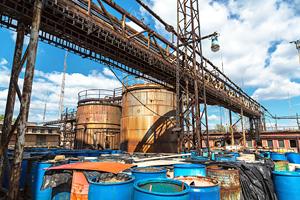Climate Adaptation and Contaminated Site Management
 EPA programs work with communities to ensure the proper management of hazardous and non-hazardous wastes now and in the future.
EPA programs work with communities to ensure the proper management of hazardous and non-hazardous wastes now and in the future.
More intense and frequent storms increase the likelihood of flooding to Superfund, corrective action actions sites, Brownfields sites, landfills and underground storage tanks. Also, greater frequency and intensity of drought can affect water-intensive remedies and site stability.
Inland Communities
Flooding and drought may result in the unregulated release of chemicals through surface soils, ground water, surface waters and/or coastal waters, complicating cleanup efforts or threaten sites that have already been remedied.
Coastal Communities
Sea-level rise and storm surge may lead to inundation of sites along vulnerable areas of the coast. Furthermore, saltwater intrusion may increase the permeability of clay liners installed at waste sites, such as landfills, threatening nearby properties.
Alaska
Temperature increases, which are likely to be especially high in the northern latitudes will result in thawing permafrost, which may allow contaminants to migrate and/or cause land shifting and subsidence.
